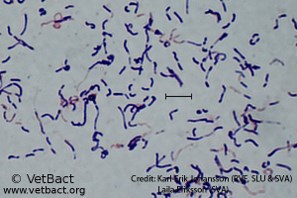Project responsible: Claes Fellström, Department of Clinical Sciences, SLU.
PhD student: Helena Eriksson, Department of Clinical Sciences, SLU and Department of Animal Health and Antimicrobial Strategies, SVA.
This study is a part of a larger project, aiming at looking at different sources of E. rhusiopathiae infection for organic laying hen flocks. Through data collection, review of procedures (e.g. biosecurity routines) and bacteriological sampling, herds experiencing outbreaks of erysipelas will be compared to herds free of the disease. In this particular study we intend to adapt and evaluate a PCR (Polymerase Chain Reaction) method in order to improve the sensitivity, speed up the diagnostics and lower the costs for analysis of the samples.
This PCR will then be run in parallel to traditional bacteriological culturing of the samples that have been taken during the investigations in the herds. Samples will be taken from potential sources of the infection, e.g. flies, rodents and other animals on the farm, and the environment, e.g. dust and soil. Since different types of soils contain substances that may inhibit PCRs, different protocols for DNA extraction from soils will be evaluated by analyzing soils contaminated with faeces mixed with E. rhusiopathiae organisms in different concentrations.
